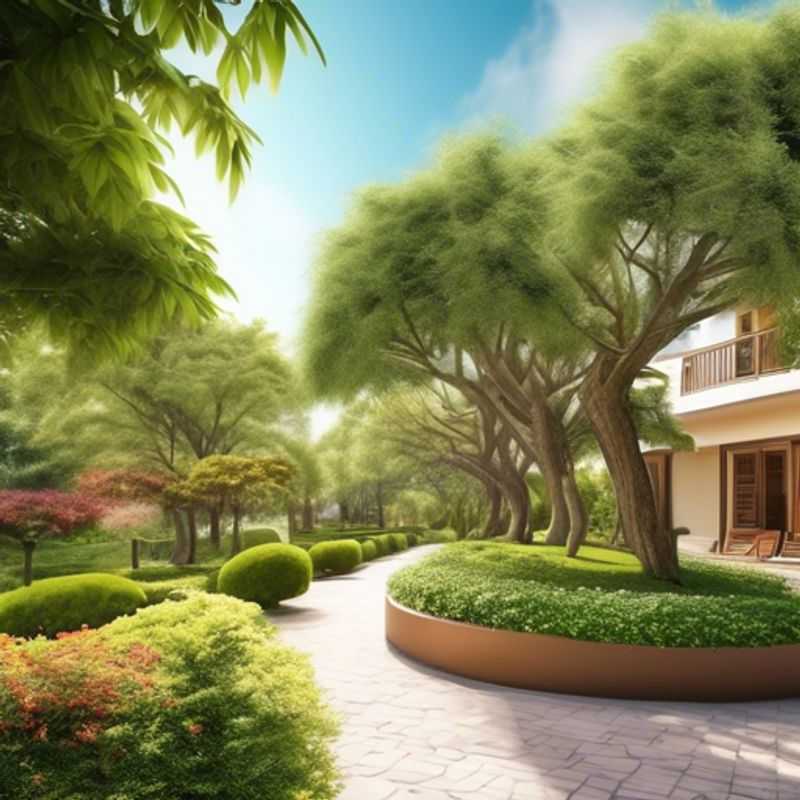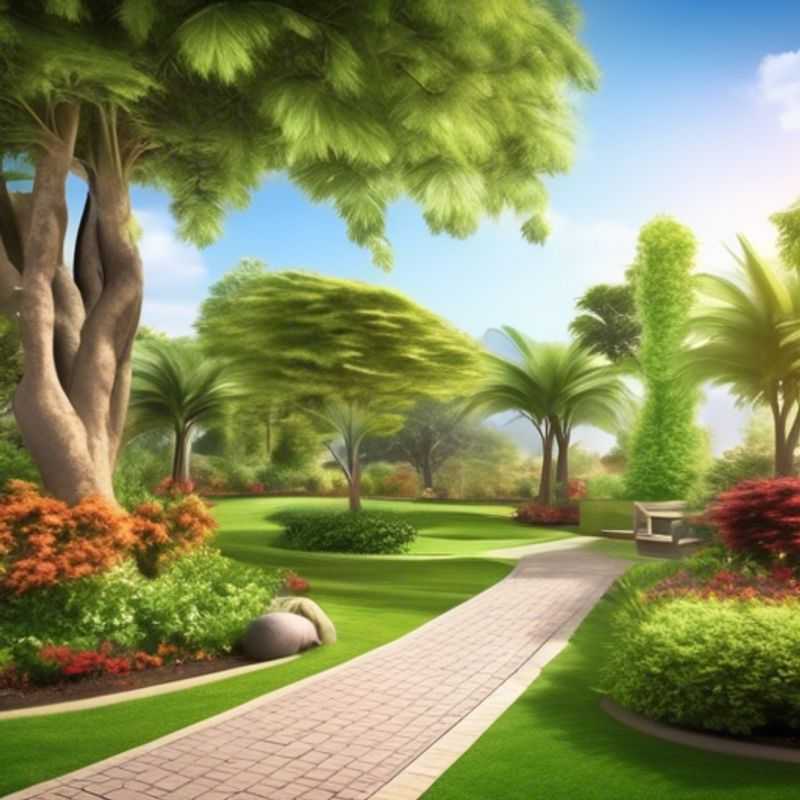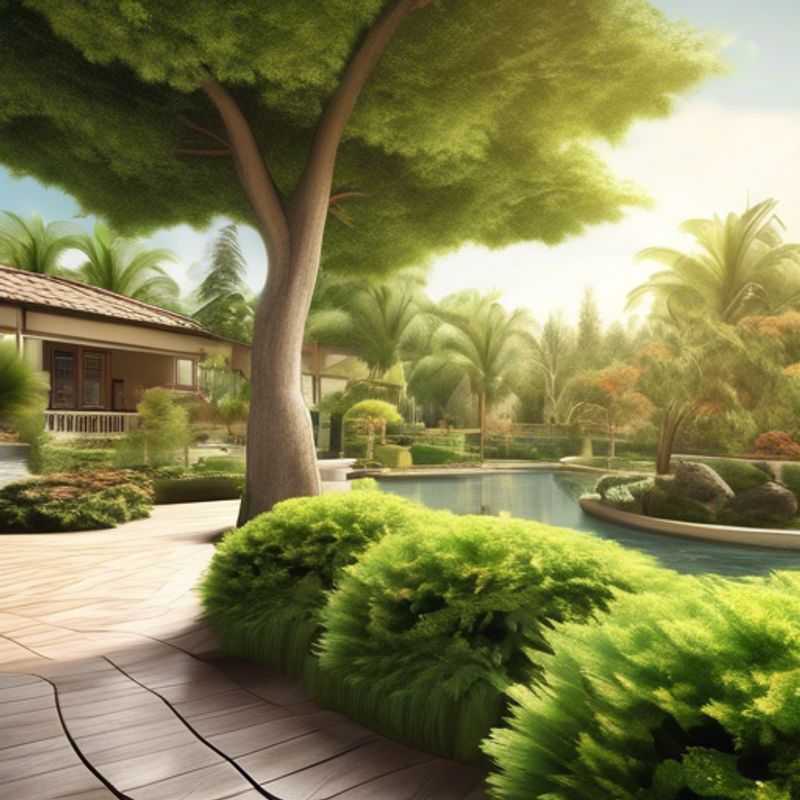Top Things to Know Before Buying Trees For Your Home Garden

Top Things to Know Before Buying Trees For Your Home Garden: A Guide to Finding the Perfect Fit
Planting trees is a fantastic way to enhance your home garden, but it’s crucial to make informed decisions to ensure a healthy and thriving landscape. Here are some key factors to consider before bringing home your next tree:
Determine the mature size of the tree: You don't want a towering oak overshadowing your home or a spreading willow encroaching on your patio. Knowing the tree's ultimate height and spread will help you choose a species that fits comfortably in your available space.
Research the tree's growing requirements: Every tree has its own preferences.

Choosing the Right Tree: How to Determine Mature Size for Your Space
Choosing the right tree for your landscape is crucial. Knowing the mature size of a tree before you plant it is essential to avoid future problems like roots damaging your foundation, branches blocking your view, or even the tree outgrowing its space and becoming a hazard.
Before you buy a tree, research its mature size. Consult online resources like university extension websites or reputable nurseries. They usually provide information on mature height, spread, and even root system size.
Consider the growth habit of the tree. Some trees have a more upright form, others spread out wide. Understanding its shape will help you estimate the mature size and ensure it fits your space.
You can also ask experienced gardeners or local arborists for advice. They often have practical experience with different species in your region.
Remember that space requirements can vary due to soil conditions, climate, and even pruning practices. But knowing the mature size is a great starting point for choosing the perfect tree for your landscape. A little planning now can save you headaches later.

Matching Trees to Their Needs: A Guide to Sunlight, Soil, and Water
Choosing the right tree for your yard is a key step in ensuring its success. Before you get too carried away with dreaming about shade, it's important to do your homework and learn about the tree's growing requirements. This will ensure you're planting it in an environment that meets its needs.
First, consider the amount of sunlight the tree needs. Does it thrive in full sun, partial shade, or full shade? Knowing this will help you select a spot in your yard that fits the bill. Next, think about the soil type. Some trees prefer acidic soil, while others tolerate alkaline conditions. Make sure the soil in your chosen spot aligns with the tree's preferences.
Lastly, understand the tree's water requirements. Some trees are drought-tolerant, while others need regular watering. Consider the amount of water you can provide and choose a tree accordingly. If you have questions about specific tree species or need help selecting the right spot, consult your local nursery or extension service for guidance.

Tree Care: Pruning, Leaf Removal, and Root Management for a Healthy Landscape
Keeping your trees healthy is vital for their longevity and the safety of your property. Here's a quick guide to essential maintenance tasks:
Pruning: This is crucial for shaping the tree, removing dead or diseased branches, and promoting growth. It's best done in late winter or early spring before new growth emerges.
Raking Leaves: While not strictly tree maintenance, removing fallen leaves prevents them from smothering the tree's roots and hindering growth. It's also good practice to remove leaves from your lawn and gardens as they decompose and release nutrients that can benefit your plants.
Root Issues: Trees with roots growing too close to structures or underground utilities can cause damage. You can address this by carefully trimming the roots or contacting a professional arborist for advice.
Consider a Professional: For complex pruning tasks or issues with your tree's health, it's recommended to consult a certified arborist. They can assess your tree's needs and provide professional services for pruning, fertilization, and pest control.

Planting the Right Tree: Matching Species to Your Climate and Hardiness Zone
When selecting a tree for your landscape, it's crucial to check its suitability for your climate and hardiness zone. The USDA Hardiness Zone Map is a valuable tool that categorizes regions based on average annual minimum temperatures, helping you determine which plants are likely to thrive in your area. Trees that are suited to your hardiness zone will be more resilient and require less maintenance.
Before planting, consider important factors such as soil type, moisture levels, and sunlight exposure, as these can significantly impact a tree's growth. Additionally, assess local climate conditions, including extremes in temperature and precipitation, to ensure compatibility.
When estimating a plan for tree planting, it’s essential to account for paid activities such as soil testing, which may cost around $20 to $50, and potential consultation fees for local arborists or horticulturists to help you choose the right species, which can range from $50 to $200. Other expenses might include purchasing the tree itself, which varies widely based on species and size.
In summary, verifying a tree's compatibility with your climate and hardiness zone is a critical step in ensuring a successful planting experience. For comprehensive guidance, further research online can provide additional insights and resources.

Planning for Growth: Understanding Tree Growth Rates and Choosing the Right Location
When selecting a tree for your property, it's crucial to consider its growth rate. A tree that grows too large for its space can cause problems like root damage to foundations, blocked views, or even damage to power lines.
The growth rate of a tree refers to how quickly it increases in height and spread. It's influenced by factors like species, climate, soil conditions, and available sunlight. Some trees, like the Silver Maple, are known for their rapid growth, while others, like the American Holly, grow much slower.
To estimate a tree's potential size at maturity, you can consult resources like online tree guides or your local nursery. They provide information on a tree's mature height and spread. It's also essential to factor in the potential growth rate of the tree. For example, a tree that grows 2 feet per year could potentially reach 40 feet in height after 20 years.
When choosing a tree for your property, it's essential to consider its potential size and growth rate. Properly researching the tree's growth characteristics and choosing a species that will thrive in your location can ensure a healthy and beautiful tree for many years to come.

Choosing the Right Tree: Matching Your Landscape and Home Style
Choosing the right tree for your landscape design is crucial, as it can significantly impact your home's aesthetic and overall curb appeal. Consider the following factors to ensure the tree complements your home and surroundings:
Size and Growth Habit: Trees come in various sizes and shapes, so it's vital to select one that will fit comfortably in your yard and won't outgrow its space. Consider the mature height and spread of the tree.
Sunlight Requirements: Trees need different amounts of sunlight to thrive. Choose a tree that matches the sunlight conditions in your yard. Avoid planting trees that require full sun in shady areas.
Soil Type: Trees have specific soil preferences. Learn about the soil type in your yard and choose a tree that will thrive in those conditions.
Hardiness Zone: The hardiness zone is an area with similar climate conditions. Ensure that the tree you select is suitable for your specific hardiness zone to ensure its survival.
Style and Aesthetics: Consider the style of your home and landscape design. Choose a tree that complements the overall aesthetic and enhances the curb appeal of your property.
Maintenance Considerations: Some trees require more maintenance than others, such as pruning or pest control. Consider your ability and willingness to maintain the tree.

Choosing the Right Tree: Get Expert Advice from Your Local Nursery or Arborist
When choosing the right tree for your landscape, consulting a local nursery or arborist is a smart move. They can provide expert advice tailored to your specific area, considering factors like soil type, climate, and your desired tree size.
A knowledgeable nursery or arborist can help you select tree species that thrive in your region, minimizing the need for extra care or specialized maintenance.
These professionals understand the unique challenges and opportunities presented by your local environment, ensuring you make an informed decision. This personalized approach can save you time and effort in the long run, leading to a healthier and more beautiful landscape.
Remember, the cost of consulting a nursery or arborist is typically a small investment compared to the potential costs of choosing a tree that doesn't thrive in your area. It's a wise step towards ensuring a successful and long-lasting addition to your property.
